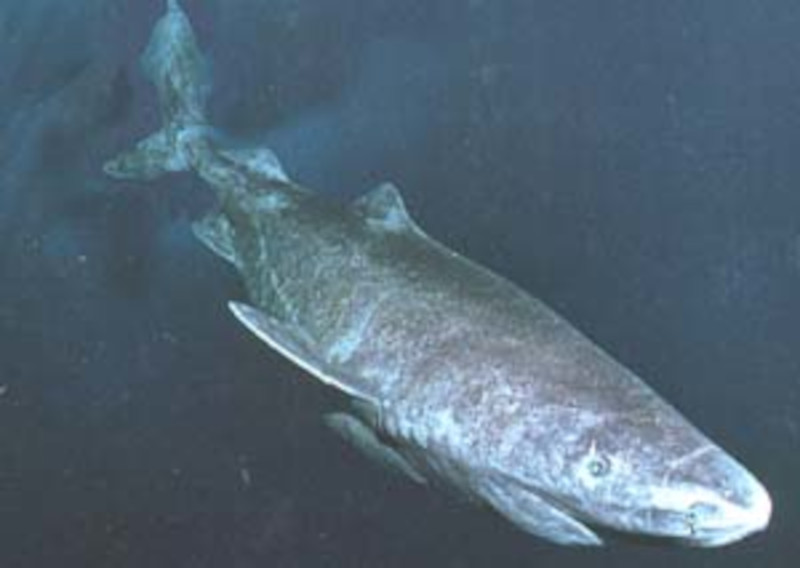Greenland Shark Facts
- The Greenland Shark is an extremely large species of shark endemic to a rather harsh range. In fact, its range reaches the farthest north of any known type of shark.
- The species also evolved numerous biological adaptations. As the only true sub-arctic shark, many of these adaptations occurred due to its environment.
- The animal remains closely related to the Pacific Sleeper Shark and also holds the unique distinction of possessing the most highly poisonous flesh of any known species of shark.
- This amazing animal is also the longest-lived of all known vertebrates, with some individuals living for up to 400 years.
Related Articles
Greenland Shark Physical Description
The Greenland Shark is one of the largest existing varieties of shark. Individuals attain an average length of as much as 21 ft (6.4 m) with weights reaching an average of 2,200 lb (1,000 kg).
Exceptional individuals, however, reach up to 24 ft (7.3 m) in length, and 3,100 lb (1,400 kg). Displaying moderate sexual dimorphism, the males of this species generally stay smaller than the females.
The species possesses a short, rounded snout, small eyes, and comparatively small fins. Its coloring ranges from pale gray to black or brown, and some individuals display streaks or spots on the back.
- Kingdom: Animalia
- Phylum: Chordata
- Class: Chondrichthyes
- Order: Squaliformes
- Family: Somniosidae
- Genus: Somniosus
- Species: S. macrocephalus
Greenland Shark Distribution, Habitat, and Ecology
The incredible Greenland Shark inhabits most of the waters of the North Atlantic Ocean. Its numbers appear to be greatest in the regions of Greenland, Canada, and Iceland, however.
Within its environment, the shark is an apex predator which predominantly feeds upon small fish. It will also sometimes consume marine mammals, such as seals.
Yet this remains rather rare as the shark is quite lethargic, with a maximum registered speed of only 1.6 mph (2.6 kph). It will also feed on carrion when the opportunity presents itself.
Some individuals do occasionally come to the surface, but generally, prefer deep water – even as deep as 7,200 ft (2,200 m).
Species Sharing Its Range
Check out our other articles on Madagascar’s Astounding Inhabitants, Mammoth Hot Springs, Eurasian Red Squirrel, Sturt’s Desert Pea, Rabid Wolf Spider, Tiger Shark, Gila Monster

